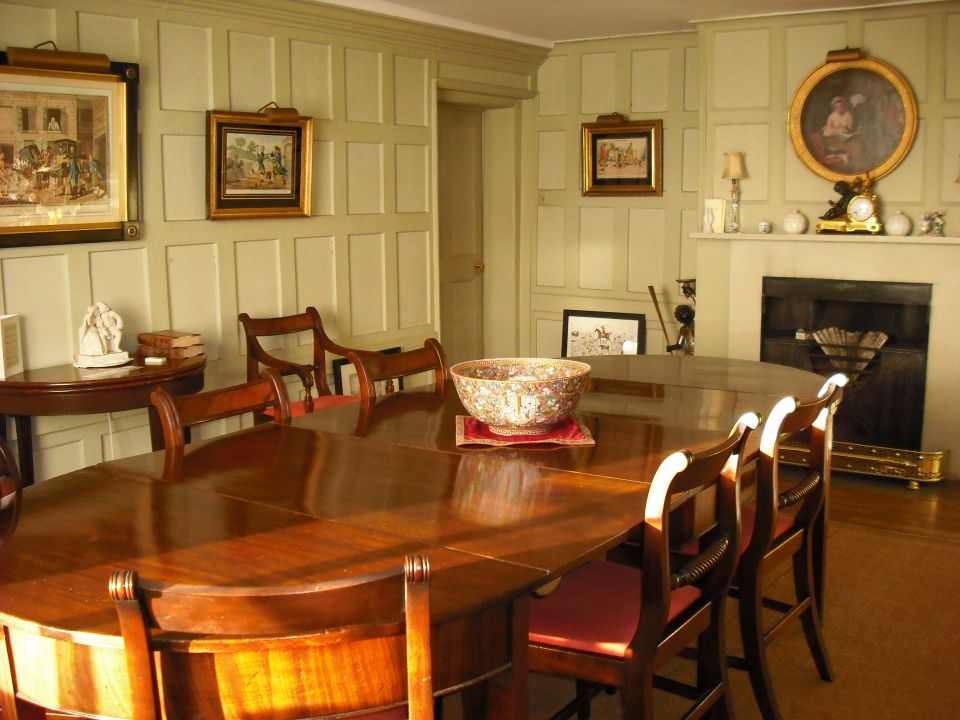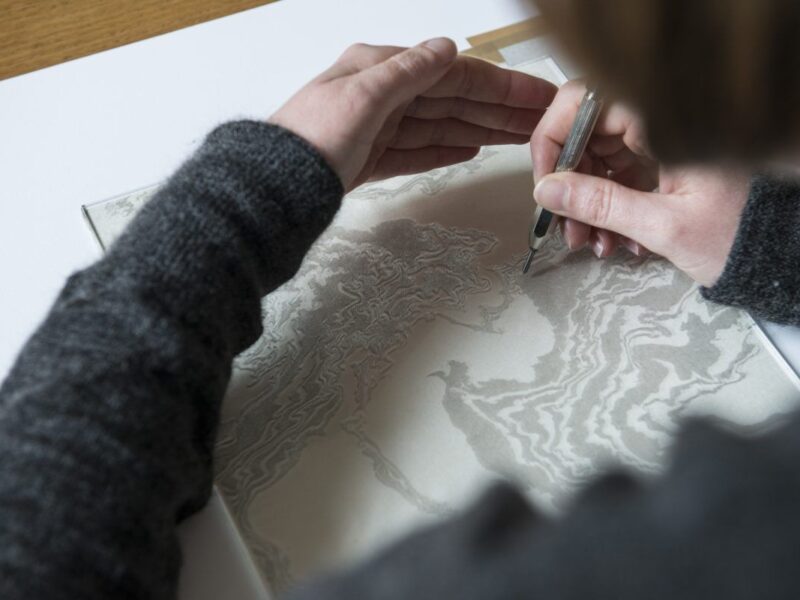Crossing the cross-passage, making sure not to bump your head on the door frame, you will next enter the Dining Room.
Beautifully panelled in oak in the seventeenth century a supporting beam, with stop-chamfered ends, runs east to west across the ceiling.
This central area of the house was ‘the hall’, the main living space with a central hearth, open to the rafters, still blackened in the present attic. Behind the panelling on the north wall (exposed during restoration in the 1970s), is a hidden window frame, half downstairs, half upstairs.
Originally the panelling would have been plain wood but changes in fashion led to it being painted in the eighteenth century in a shade of green very closely matched by the present colour.
A selection of prints and oil paintings are displayed on the walls: four coloured etchings by Henry Bunbury showing episodes from Tristram Shandy; a painting by Charles Robert Leslie entitled Uncle Toby and the Widow Wadman showing Tristram’s uncle being beguiled (the popular image was reproduced in porcelain, on pot-lids and in parian ware); and a scene from A Sentimental Journey by Abraham Solomon showing Parson Yorick (alias Laurence Sterne) being fascinated by the beauty of the glove-seller’s ‘silken lashes’.









